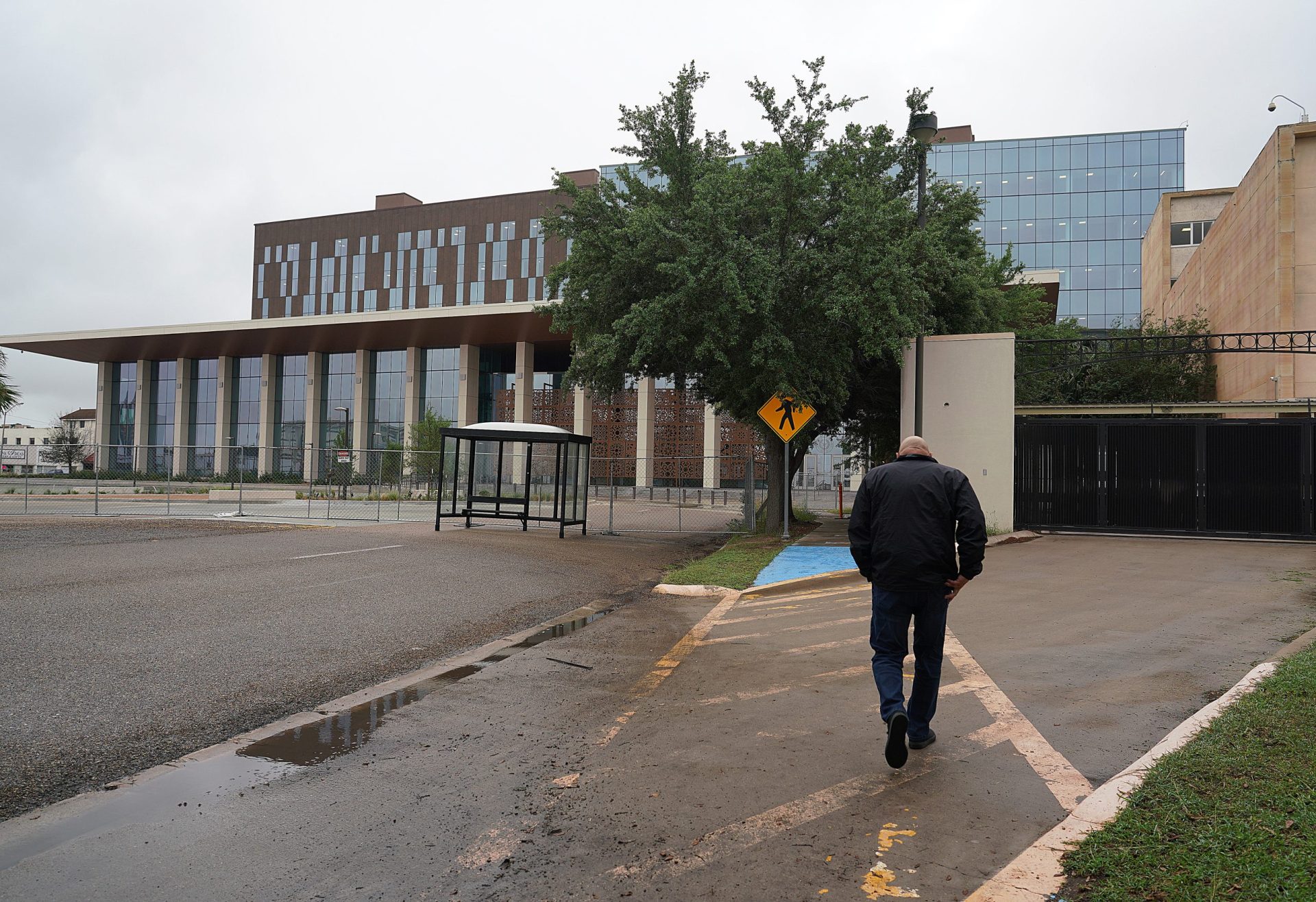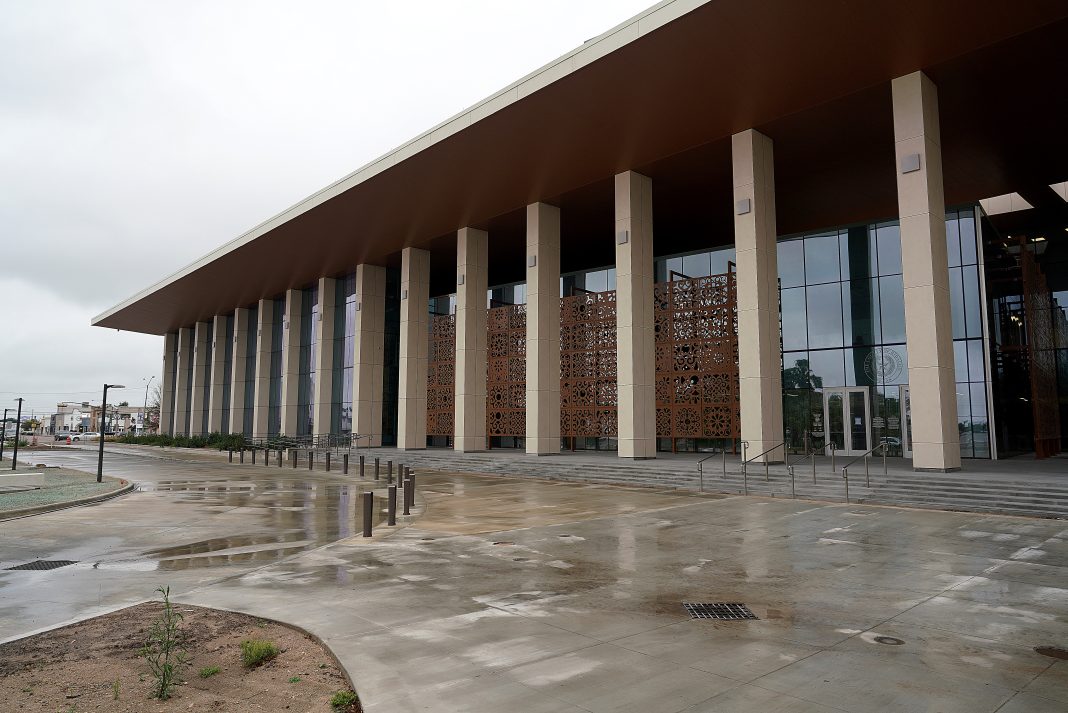|
Only have a minute? Listen instead
Getting your Trinity Audio player ready...
|
Hidalgo County has released the executive summary compiled by an engineering firm that it tasked with assessing the new courthouse’s construction after problems with the roof and exterior envelope surfaced this year.
These issues, which publicly surfaced in April, have continually pushed back the opening of the $180 million building.
The county hired the Houston engineering firm Wiss, Janneu, Elstner Associates Inc., or WJE, to conduct the assessment.
In a news release about the executive summary, the county said it would not release the full preliminary report because it “contains detailed schematic and photographic information about the courthouse that included safety and security features.”
As for the executive summary, it said the firm conducted its inspections in April.
That document said the firm used drones to conduct a cursory visual survey of the roof and facade areas throughout the building and also used infrared thermography, a non-invasive imaging instrument, to locate thermal anomalies in the surface temperatures of the building.
“WJE conducted an (infrared thermography) survey on the evening of April 12, 2023 and verified any detected thermal anomalies the following day using non-destructive moisture meters in an attempt to identify locations of entrapped water or saturated insulation within the roofing assemblies,” the summary stated. “In general, thermal anomalies were observed within localized areas.”
A similar survey was conducted in a limited manner on the facade and interior of the new courthouse.
“In general, and at locations throughout the building surveyed, water staining and elevated moisture was not detected other than at locations around stucco and punched windows,” the summary stated. “Construction clearing activities were in progress during the survey; therefore, any moisture-stained materials, if present, were not readily visible, and elevated moisture readings were not detected at the isolated locations surveyed.”
The firm also conducted a differential pressure survey between the building’s interior and exterior in an effort to learn about possible air leakage or humidity control issues related to general building pressures.
“The building was determined to be generally under positive pressure between the interior and exterior of the building,” the summary stated.
That document also makes several recommendations for the building.
One focus there is the roof. The firm found that the majority of the roof covering and flashings appear to be in fair condition “with isolated areas in poor condition.”
“Numerous areas of ponding water and sedimentation staining are apparent due to improper underlying tapered insulation and cricket installation, resulting in inadequate or interrupted roof slope to drains,” the summary stated.
The firm also found that various roof system components were not installed in accordance with the project’s specifications or the roofing membrane manufacturer’s installation instructions.
“As such, we recommend performing roof repairs and/or localized removal and replacement, as required, in accordance with the manufacturer’s installation instructions for the roof to reach its serviceable condition and achieve the manufacturer’s warranty,” the summary stated.

The assessment also found that rainscreen gaskets, which help seal the curtain wall and reduce the chance of rain leaks, were damaged or displaced and should be removed and replaced.
The firm also found hairline cracks in some locations near wall bases and believe that those cracks are due to other factors than normal curing shrinkage.
“As such, we recommend that the assembly be further investigated to determine if moisture has the ability to enter the system, as well as to determine the general construction of the assembly and integration with adjacent cladding and windows,” the summary stated.
Lastly, the firm said previously failed water testing is likely because of improper cladding terminations at window perimeters.
“The testing, as it currently stands, should be resumed and completed after further investigation is performed and once the punched window and adjacent enclosure component repairs are completed,” the summary stated.





